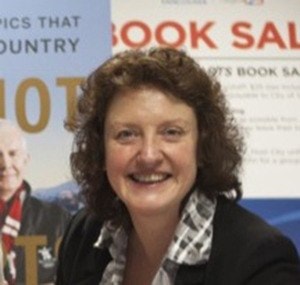Comox Valley MLA Don McRae's latest cabinet post could help the Comox Valley become a showcase for social innovation in B.C., says business consultant/marketing specialist Sandra Hamilton.
McRae's ministry switched this year from education to social development and social innovation. The latter was coined in the 1990s but the concept has been around for more than 150 years. Social Innovation challenges conventional thinking, and approaches old problems in new ways.
In March, B.C. created a new way of incorporating a business whereby companies are required to make a community contribution. Dubbed Community Contribution Companies (C3s), the legislation comes into effect at the end of July.
"That happens to be the first time in 100 years that there is a new way of incorporating a business," Hamilton said. "We now have an opportunity to bring very unlikely partners together."
For instance, non-profits and for-profits could collectively form a C3 to achieve something beneficial to a community.
"The non-profits will get earned revenue, which is what they need because their grants and donations are only in decline," Hamilton said. "It allows a private investor to join a charity for community good. We've never had a vessel where you could do that before."
This is called social enterprise, a business that uses market forces to address a social problem.
Hamilton has helped create Canada's first MBA in social enterprise leadership. Previously, she was in the business of transitioning Olympians such as Silken Laumann.
"The question I wake up with most mornings is what could the Comox Valley also be? Asking ourselves to think about where we live, and how might we want to do things differently to get where we would like to go."
Why, for instance, are we building a new hospital without a child care centre?
Why is it difficult to serve local food in a hospital?
Why donate to Value Village — which is a private, American corporation — instead of the Salvation Army or the Comox Valley Transition Society's Too Good to be Threw?
"Social innovation is about addressing those kind of problems," Hamilton said.
With two new hospitals on the horizon locally and in Campbell River, she said the Valley has four and a half years to ramp up farm and food supply.
"How often do you get four and a half years to ramp up production before something opens?" she said, noting the difficulty of changing a food supply chain of an existing hospital.
If the community gave farmers 30-year contracts, it would see a transition from Farmers' Market to commercial production, which would achieve food security, better food and nutrition, jobs and environmental improvement. In addition, profits made from food sold in hospitals would fund social programs.
She notes the Vancouver Island Health Authority has no food procurement policy, which means a contract winner is not obliged to identify food producers.
"That's archaic," Hamilton said, noting organizations typically have language in purchasing which considers social and environmental impacts.
If McRae could change the rules around social impact purchasing, Hamilton said we would be able to keep money in the community for a longer duration, and insist any public authority first has to buy locally before supplies are depleted.
"We need all of our politicians to shift our thinking," Hamilton said. "We have to get out of the silos. We have to stop saying, 'It's not my mandate.' It's about collaboration, it's about breaking down the silos."
reporter@comoxvalleyrecord.com
